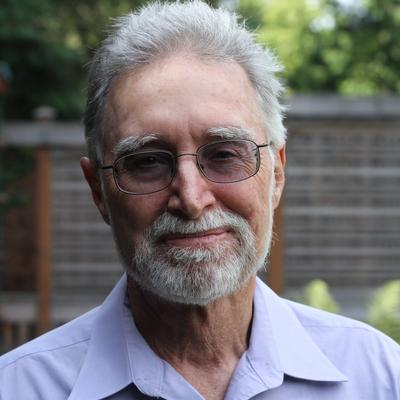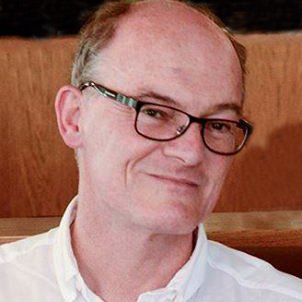Four Structural Problems of Soviet Planning
‟As time wore on, the negative side-effects of this mode of economic growth grew more severe.
 |
| Workers of Moscow Likhachev Automotive Plant in 1963 (Wikimedia Commons). |
A short introduction to the structural problems of Soviet planning, written by economist Catherine Samary in 1988. In this extract from one of her books, Samary sums up four of them: (a) the tendency for a long-term decline of growth rates, (b) not being able to break with the methods of “extensive” growth, (c) shortages and bottlenecks in production and (d) a combination of shortage of labor power (meaning no unemployment) and “over-employment”.
Originally published as the introduction to Lecture 1 (page 13-14) in Samary's book from 1988. titled Plan, Market and Democracy; the experience of the so-called socialist countries.
|
|---|
About the author (click)
Catherine Samary is an economist and specialist on the Balkans and Eastern Europe. Samary has previously been teaching at the Université Paris-Dauphine. She was a member of the IRISSO (Institute for Interdisciplinary Research in Social Sciences) and collaborator of the Institute of European Studies at the University Paris 8. She was a collaborator of Le Monde Diplomatique and has been active in several internationalist associations since the sixties (including Espaces Marx and ATTAC).
T
he basic problems of bureaucratic planning are well-known. They have been described by the new Soviet leaders themselves. Mikhail Gorbachev laid them out in his book Perestroika and the New Thinking [5-1987], which his adviser, Abel Aganbegian, complemented with Perestroika, le double defí soviétique [5-1987]. This lecture will focus on the case of the Soviet Union. But similar structural problems are found beyond its borders, everywhere Soviet planning served as a model.
The structural problems
a) The first is the tendency for a long-term decline of the growth rates of national income and productivity — with a concomitant increase of costs. (See table on next page). These long-term trends are compatible, as indicated by the tables, with fragile recoveries associated with short-lived attempts at reform (as in the late 1950s and between 1965 and 1970).
Note that gross national product figures do not reflect widespread product defects and waste. In fact, problems of shoddy quality and inadequate variety of goods and services are chronic.
Nevertheless, the standard of living rose steadily until the mid-1960s; many Soviet homes acquired durable consumer goods; food imports were able to make up for shortfalls in Soviet agriculture (see table). “Parallel” jobs (moonlighting) were tolerated and filled the gaps left by the planning system (repairs and services).
‟Industrial development and the steady rise of incomes aroused new sorts of demands from the younger generation that had not experienced the hard times and sacrifices of their parents.
But as time wore on, the negative side-effects of this mode of economic growth grew more severe: increased wastefulness, rising inefficiency of the “legal” work, eroding morale, etc. In addition, industrial development and the steady rise of incomes aroused new sorts of demands from the younger generation that had not experienced the hard times and sacrifices of their parents. These aspirations were further stimulated by comparisons with the situation in other countries.
b) On the whole, the Soviet economy has not been able to make a clean break with the methods characteristic of “extensive” growth (that is operating more and more mines, opening more and more construction projects and factories, cultivating more and more land, employing more and more workers on more of the same equipment). Every attempt at reform since the 1960s set itself the goal of a transition to more “intensive” growth (by improving the productivity of existing units), but no avail. Each time, the need to reduce wastage and shortages and improve the quality and variety of goods was reaffirmed with a salvo of new slogans. These were also the initial goals of the reforms introduced in Czechoslovakia, leading up to the Prague Spring. The same problems were posed again when Hungary, Yugoslavia and China tried out the reforms.
Change became more imperative in the USSR in the 1980s as full-employment and the trough in the population curve — caused by the decline in childbirths during World War Two — closed off the possibility of further growth through the hiring of new workers. At the same time, natural resources were tending to become exhausted for both economic reasons (wasteful and backward extraction methods) and physical reasons (the need to drill in ever more remote areas at increasing short-term costs). Moreover, the multiplication of new work sites in the previous period meant that much of the equipment was wearing out or becoming obsolete at the same time, a potentially critical problem.
c) Shortages and bottlenecks in production are one of the features of the rigid planning model in effect in the USSR. Brezhnev had succeeded in softening their impact in the 1970s by a policy of large-scale imports. This ineffective substitute for reform very rapidly ran up against a series of problems: inability to export sufficiently (because of poor competitivity or shrinking markets due to the world crisis); United States vetoes on the import of technology considered of strategic value and the ups and downs of embargoes on cereal shipments; and, more fundamentally, the difficulty of incorporating Western technologies in a conservative economy and the problems of the growing foreign debt.
The experiences of other East European countries (particularly the relative efficiency of the German Democratic Republic) show that the magnitude of the shortcomings of Soviet planning must have had specific causes — sharper crystallization of bureaucratic structures, lasting crisis of agriculture as a result of forced collectivization, the enormous size of the country which, in a system which seeks to set every minute detail, widened the gap between the goals set by the plan and actual performance, etc. Nevertheless, this sort of problem was common to all countries applying this planning model, and has been ably described by the Hungarian economist Kornaï in his book, The Economics of Shortage [5-1980].
d) A combination of shortage of labor power (meaning no unemployment) and “over-employment”. We have put quotation marks around the word over-employment to emphasize that the problem is usually posed in misguided fashion. “Over-employment” is generally used to refer to the fact that Soviet firms hire many more workers than capitalist firms to achieve the same output. The criteria used to decide the “correct” amount of hiring are implicitly drawn from the capitalist model. This is, to say the least, not a satisfactory approach. But the point is to focus attention on the fact that a large number of working hours or of production periods are not actually worked, or that a given output could be achieved with fewer workers. More generally, full employment does not necessarily mean best employment, neither in terms of having the tasks at hand performed by the existing recognized skills, nor in terms of the general balance in the distribution of social work among all industries. The whole point of the debate is precisely to decide what criteria should be used — and how to substitute them to the existing criteria.
‟Stalin actually identified socialism with state planning or, worse yet, nationalization with socialization. This is not our approach.
But before moving on to this debate, we should try and uncover the deeper roots of the features sketched above. We shall seek these roots in the existing social relations, not only inside the workplace but in society as a whole. For at bottom, it is the — real, not just juridical — “property relations” and the values attached to them, which shape the particular contradictions of this planning model.
A remark is called for at this point. After the October revolution, the Bolsheviks — all tendencies included — identified both the state sector and plan as “socialist.” They were referring, as Lenin pointed out [see the introduction of this notebook], to their goals, not to a full-blown reality. When Stalin decreed that socialism had been achieved in the late 1930s, he made the initial problem worse: he actually identified socialism with state planning or, worse yet, nationalization with socialization. This is not our approach. However, simply stating that the USSR is not socialist does not mean that everything about Soviet planning can be explained by the existence of a bureaucracy, if only because several types of bureaucratic planning are possible. It is therefore necessary to be as precise as possible about the mechanisms and social consequences of this first model.
| ☞ Continue reading: This was only page 12-13. Read the entire book Plan, Market and Democracy; the experience of the so-called socialist countries (1988) here. |
On Plan, Market and Democracy (1988)
and more to come in 2018.
 |
| The full version of the book can be downloaded here. |
The book Plan, Market and Democracy (1988), published at a moment of crisis in the so-called socialist USSR, reflects on the experiences of the so-called socialist countries during the twentieth century. Samary analyses the contradictions and conflicts within their socio-economic systems, during the era of “bureaucratically styled planning” of the USSR and during the (variety of) reforms that occurred over the decades in different regions.
After a general presentation of “theoretical, political and methodological questions”, in which Samary differentiates “three types of economic systems which have really existed or were proposed at one point or another in the so-called socialist countries”, each variant's contradictions are analysed in separate “lectures”: (1) the centralized bureaucratic planning of the “soviet model” and the different types of reforms. (2) The introduction of some market relationships combined with a reformed planning - without or with self-management rights for workers in the factories. (3) “Market socialism” which suppresses any plan but increases self-management rights in all factories. The last part of the book is a “critical review and up-date” of the “Soviet 1920s debate on the law of value. The conclusion raises the issue of “social optimum”.
In a new book edited by Samary, to be published in 2018, including several authors and her own contributions, she will be revisiting the “short XXth Century” and the post 1989's capitalist globalisation according to her central concerns: up-dating the past conflicting experiences and debates on the "transition to socialism" with a central focus on the issue of self-management, and linking them to the present ones linked to the issue of the 'commons'.
SE will announce the publication of this new book by publishing one of Samary's articles from this book.

























Comments
Post a Comment
Your thoughts...